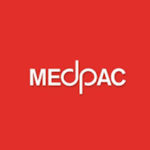Medicare rates would rise for some providers and fall for others based on recommendations made to Congress last week by the Medicare Payment Advisory Commission, the independent congressional agency that advises Congress on Medicare reimbursement matters.
 MedPAC’s rate recommendations to Congress and the administration, which it approved at its January 2023 meeting, are:
MedPAC’s rate recommendations to Congress and the administration, which it approved at its January 2023 meeting, are:
- Outpatient and inpatient prospective payment systems – under current law, the estimated increase would be about 2.9 percent; MedPAC proposes 2.9 percent plus one percent.
- Physician services – increase fees 50 percent of the projected increase in the medical economic index (MEI).
- Skilled nursing facilities – reduce the current base rate three percent.
- Home health services – reduce the current base rate seven percent.
- Hospice services – a complex proposal to increase some payments 2.9 percent but to reduce payments “for providers with very long lengths of stay and lost costs relative to payments.”
- Outpatient dialysis – MedPAC endorses the current law’s call for a 1.8 percent increase.
Breaking with recent years, MedPAC has discontinued its practice of offering rate recommendations for long-term-care hospitals (LTCHs) and ambulatory surgical centers, citing inadequate data on which to base recommendations.
In addition, MedPAC offers recommendations for redistributing current Medicare disproportionate share hospital (Medicare DSH) and uncompensated care payments and providing additional resources to Medicare safety-net hospitals and clinicians who furnish care to Medicare beneficiaries with low incomes. While the Alliance of Safety-Net Hospitals (ASH) appreciates MedPAC’s proposal for making better use of Medicare DSH resources, ASH has its own proposal for achieving the same end that it believes does a better job of identifying the community safety-net hospitals with the greatest needs and distributing additional Medicare and Medicaid supplemental funds to them more effectively to ensure their future ability to provide access to care and pursue health equity in their diverse, generally low-income communities. Learn more from ASH’s “Proposal to Advance Health Equity.”
While MedPAC’s recommendations are binding on neither Congress nor the administration, its views are widely respected in Washington, D.C. and often find their way into future policy-making.
To learn more, see this MedPAC news release; this summary of the report; this executive summary; and the full report.

